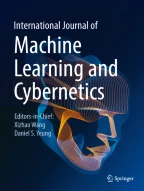Abstract
Bisociation Network (BisoNet) is a novel approach for creative information discovery, and it can be projected to many real application domains. Bisociation of business processes onto a network is one of such applications. In this paper, we investigate business processes on the BisoNet, and develop a directed graph model to map the relations between business process flows. Based on the BisoNet model, we analyze the real-world data provided by a call service centre. The network-based statistics show that some special process steps could be key steps that greatly affect the performance of the service, and could result in a case unsolved. The network is simplified through constructing the network with shortest path of each process flow, and the simplified network may represent an optimal process pattern. This may provide a reference to the business organization for improving the quality of their service.







Similar content being viewed by others
Explore related subjects
Discover the latest articles, news and stories from top researchers in related subjects.References
Jackson AD, Somers KM, Harvey HH (1989) Similarity coefficients: measures of co-occurrence and association or simply measures of occurrence? Am Nat 133(3):436–453
Baeza-Yates RA, Ribeiro-Neto B (1999) Modern information retrieval. Addison-Wesley Longman Publishing Co., Boston
Koestler A (1964) The act of creation. Hutchinson, London
Berthold MR, Dill F, Kötter T, Thiel K (2008) Supporting creativity: towards associative discovery of new insights. In: Advances in knowledge discovery and data mining, the proceedings of Advances in Knowledge Discovery and Data Mining 12th Pacific-Asia Conference, PAKDD 2008 Osaka, Japan, May 20–23
Albert R, Barabasi AL (2002) Statistical mechanics of complex networks. Rev Mod Phys 74(1):47C 97
Bales ME, Johnson SB (2006) Graph theoretic modeling of large-scale semantic networks. J Biomed Inform 39(4): 451–464
Bosman DWJ, Blom E-J, Ogao PJ, Kuipers OP, Roerdink JBTM (2007) MOVE: a multilevel ontology-based visualization and exploration framework for genomic networks. Silico Biol 7:35–59
Shen Z, Ma K-L, Eliassi-Rad T (2006) Visual analysis of large heterogeneous saocial networks by semantic and structural abstraction. IEEE Transact Vis Comput Graphics 12(6):1427–1439
Tollis IG, Di Battista G, Eades P, Tamassia R (1999) Graph drawing: algorithms for the visualization of graphs. Prentice Hall, Englewood Cliffs
Zhong Z, Liu Z, Li C, Guan Y (2011) Event ontology reasoning based on event class influence factors. Int J Mach Learn Cyber. doi:10.1007/s13042-011-0046-8
Castillo JJ (2011) A WordNet-based semantic approach to textual entailment and cross-lingual textual entailment. Int J Mach Learn Cyber 2(3):177–189
Kötter T, Thiel K, Berthold MR (2010) Domain bridging associations support creativity. In Proceedings of the first international conference on computational creative (ICCC-X), Lisbon, Portugal, pp 7–9
Mozetič I, Lavrač N, Podpecan V, Novak PK, Motaln H, Petek M, Gruden K, Toivonen H, Kulovesi K (2010) Bisociative knowledge discovery for microarray data analysis. In Proceedings of the first international conference on computational creative (ICCC-X), Lisbon, Portugal, pp 7–9
Andersen B (1999) Business improvement toolbox. ASQ Quality Press, Milwaukee
Trischler WE (1996) Understanding and applying value added assessment. ASQ Quality Press, Milwaukee
Martin TP, Shen Y, Azvine B (2008) Incremental evolution of fuzzy grammar fragments to enhance instance matching and text mining. IEEE Transact Fuzzy Syst 16:1425–1438
Wang X-Z, Tsang E, Zhao S-Y, Chen D-G, Yeung D (2007) Learning fuzzy rules from fuzzy examples based on rough set techniques. Inform Sci 177(20):4493–4514
Wang X-Z, Dong C-R (2009) Improving generalization of fuzzy if-then rules by maximizing fuzzy entropy. IEEE Trans Fuzzy Syst 17(3):556–567
Acknowledgments
This work is based on the research supported by the EU PF7 BISON project, when the first author worked on the project in the University of Bristol. ZQ also thanks the NECT Program of MOE, China and the SRF for ROCS.
Author information
Authors and Affiliations
Corresponding author
Rights and permissions
About this article
Cite this article
He, H., Qin, Z. Bisociation networks analysis for business process. Int. J. Mach. Learn. & Cyber. 4, 419–426 (2013). https://doi.org/10.1007/s13042-012-0113-9
Received:
Accepted:
Published:
Issue Date:
DOI: https://doi.org/10.1007/s13042-012-0113-9
